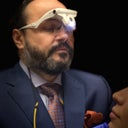is it safe to take a 2H flight with a seroma that still needs to be drained from time to time? Thank you
Answers (4)
From board-certified doctors and trusted medical professionals
More Tummy Tuck Questions
See all Tummy Tuck Q&AWE SEND PRETTY
EMAILS
What’s trending? Who’s turning heads? Which TikTok myths need busting? We’ve got you. No fluff, no gatekeeping—just real talk. Get our free, unfiltered newsletter.

